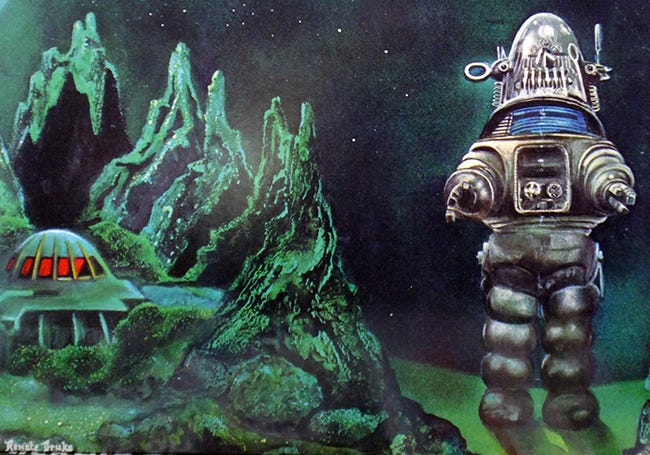
Artist, muse, and filmmaker Renate Druks was born in Vienna on January 2, 1921. Her father was a doctor, but the specifics of his practice are unclear. While little is documented about her childhood, Anaïs Nin, a longtime friend, wrote about Druks in her writings. Nin noted that Druks’ father treated her as a confidante and a friend, discussing her mother with her as if Druks were an adult. He explained that his wife's constant depression drove him away from home. Nin also recorded that Druks father told her, "No man will love you as much as I do," which may have impacted her psyche for life. Druks mother was a painter and art teacher who encouraged her daughter's early artistic development. Throughout her childhood, Druks lived in various European countries, including Italy, France, Spain, and Belgium, where the masterpieces of the Old Masters inspired her. She studied art at the Vienna Akademie for Women.
In 1938, Druks married Harry P. Loomer, a psychiatrist 12 years her senior. Loomer was a pioneer in the use of psychotropic drugs for treating depression. The couple fled Austria due to World War II and initially settled in Brooklyn with Loomer's family. There, Druks continued her artistic studies at the Art Students League of New York. Census records indicate that she lived in Brooklyn with Loomer and his parents in 1940. They welcomed a son named Peter in 1943. By 1948, the couple had moved to Compton, California. However, in 1952, the Los Angeles County voter registration list showed that Loomer lived alone at their shared address. Druks left her husband some time between the late 1940s and early 1950s, eventually taking up residence in Mexico.
During this time, Druks lived in the artists' colony of San Miguel de Allende in Mexico, where she spent three years painting and developing her own visual style. This is likely where she befriended Marjorie Cameron, despite contemporary reports suggesting they were rivals. It is believed that Leonora Carrington, Marjorie Cameron, and Druks were all there simultaneously, depicting surreal visions (and cats) in their work. While in San Miguel de Allende, Druks also met actor Paul Mathison, a gay artist with whom she later moved to Malibu.
Druks immersed herself in the experimental art scene in Los Angeles after her three years in Mexico. She and Mathiesen hosted extravagant themed costume parties at her Malibu home, including the infamous "Come as Your Madness" celebration, which inspired Kenneth Anger's 1954 film, Inauguration of the Pleasure Dome. At the party, the guests and their costumes became the cast of the film: Curtis Harrington portrayed Cesare from Cabinet of Dr. Caligari, Cameron was the Scarlet Woman, Paul Mathison took on the role of Pan, and Anaïs Nin embodied Astarte, all set in Samson De Brier's home. Druks played the character "Lilith," depicted as a woman with red hair and a broad, laughing face that transformed into a skeleton after she ingested a magic potion. She also worked on the makeup and production design.
Druks' Malibu home became a showcase where patrons and collectors gathered to view, commission, and purchase her work. It also functioned as a well-known salon for avant-garde artists, actors, filmmakers, writers, and theatre personalities, including Kenneth Anger, Curtis Harrington, James Bridges, John and Joan Houseman, Colleen Dewhurst, Jack Larson, Christopher Isherwood, Henry Miller, and her close friend Anaïs Nin. Nin and Druks had been friends since the famous "Come as Your Madness" masquerade ball in 1953. In the book The Occult Explosion (Nat Freedland, 1972), Druks is quoted as saying, "Marjorie Cameron stayed with me at my Malibu beach house for six months, pulling herself together after Jack Parsons died."
Druks first major solo exhibition took place at the Lane Galleries in Westwood, California, in 1957 and received critical acclaim. Until 1965, she exclusively showcased and sold her paintings at the Lane Galleries. Thereafter, Druks exhibited her work at various galleries in the Los Angeles area, including Image and Myth, Mascagnis, the Malibu Art and Design Gallery, and the Municipal Art Gallery in Barnsdall Park. Eventually, she and Mathison parted ways, though the reasons for their separation remain unclear.

By the late 1950s, Druks was a hostess at the Holiday House Hotel, an infamous celebrity hangout on Malibu Beach. During this time, she studied the ancient Hindu philosophy of Vedanta and practiced Thelema, an occult religious movement founded by Aleister Crowley. Druks developed a friendship with painter Don Bachardy and continued to inspire and mentor various artists. At the age of 38, she met Ronnie Knox at The Sportsmen's Club. Knox was 24 years old and already a well-known football player from UCLA. Her 16-year-old son, Peter, idolized Knox. Druks and Knox hid their affair from their friends, both feeling a sense of embarrassment over their odd pairing. The couple married in June 1959 in Taxco, Taxco de Alarcón, Guerrero, Mexico.
After their marriage, the two embarked on a trip around Europe. Her son Peter chose not to join them, preferring instead to start his studies at UCLA. This unfortunate journey is recounted in Nin's Collages, where the couple attempted to live on a sailboat (neither knew how to sail) that eventually sank. Upon returning to Los Angeles, Druks supported them by working as a commercial artist and renting out her Malibu home. The couple divorced in 1964, and Druks moved back to Malibu with her son, who had dropped out of UCLA. Tragically, Peter died of a heroin overdose later that same year. Druks was unaware of his struggles with addiction. By all accounts, she was devastated by his loss, becoming hysterical and never recovering.
Throughout the 1960s and 70s, Druks lived and painted in Malibu. Her friends tried to help her by offering a variety of one-off jobs, including creating a commissioned portrait of James Caan for Curtis Harrington's film Games. She also designed album covers for Judy Mayhan's 1971 self-titled album, Riot's sole album, Welcome to the World of Riot (1974), and the 1976 release of Louis and Bebe Barron's score for Forbidden Planet. Additionally, Druks provided artwork for an edition of Paul Verlaine's poems. In 1979, Druks illustrated and published Nin's memoir of their friendship titled Portrait in Three Dimensions. She had also inspired Nin's 1964 novel Collages, and the two collaborated on a screenplay adapted from that work. In addition to her painting, Druks was a filmmaker and directed several of her own films. In 1967, she produced a 12-minute documentary about her painting process called A Painter's Journal. In 1973, her short film Space Boy was nominated for a Grand Prix at the Cannes Film Festival. This film was intended as a sequel to her friend Curtis Harrington's 1966 science-fiction horror film, Queen of Blood.
In 1987, circumstances forced Druks out of her Malibu home and into a small condominium in Hollywood. She continued her painting practice there until her passing on December 15, 2007. Although her artwork found little commercial success during her lifetime, a collection of her paintings was exhibited at Max Levai's Ranch gallery in Montauk, New York, in July 2021. This exhibition took place fourteen years after her death and more than fifty years since her last solo exhibit.
Keep reading with a 7-day free trial
Subscribe to Angela Rose Design to keep reading this post and get 7 days of free access to the full post archives.











